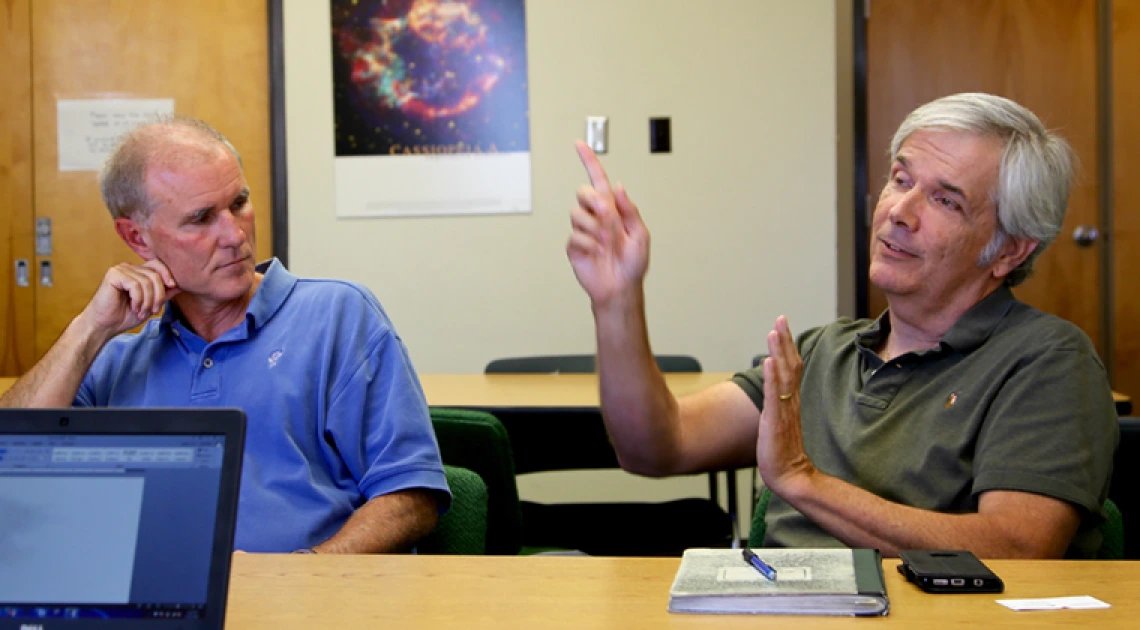Tech Blog: UA Professor Develops Terahertz Transistor Capable of Solving Problems in Quantum Computing

Christopher Walker, Ph.D., a professor of astronomy at the University of Arizona’s Steward Observatory, has spent decades developing and using a state-of-the-art terahertz detection system to map interstellar gas clouds and probe the baby stars forming inside them.
 That includes launching his instruments on a NASA-funded, balloon-borne telescope (pictured right) from Antarctica or installing them on high mountaintop observatories in Arizona and the high Andes.
That includes launching his instruments on a NASA-funded, balloon-borne telescope (pictured right) from Antarctica or installing them on high mountaintop observatories in Arizona and the high Andes.
During one of his months-long sojourns in Antarctica, Dr. Walker came up with a new superconducting terahertz transistor to improve the sensitivity of his instruments.
He quickly realized that, not only could his new transistor design improve his astronomical imaging, but it could also be used for safer high-resolution medical imaging as well as security and radar imaging, spectroscopy and ultra-fast data links.
A transistor is a semiconducting device that amplifies or switches electronic signals and electrical power. Because of their small size, low power consumption, and ability to substitute for vacuum tubes, transistors originally appeared in hearing aids and pocket radios in the 1950s. Today, transistors are most commonly found in computer memory chips, microprocessors, modern telecommunication systems, and solid-state multimedia storage devices for electronic games, cameras, and MP3 players. These transistors are commonly capable of achieving switching speeds measured in gigahertz; a billion on-and-off cycles per second.
Dr. Walker’s terahertz transistor can be used as a sensitive amplifier to read faint signals from stars but can also be used as an oscillator to generate safe terahertz radiation for applications like medical imaging. However, while working with UA’s Tech Launch Arizona (TLA) to commercialize his technology, Dr. Walker realized that his terahertz transistor can be applied for use as a logic gate in the design of quantum computers.
“The neat thing about it is how fast the terahertz transistor can run,” says Walker. “What it boils down to is that a superconducting terahertz transistor operates a thousand times faster than a current state-of-the-art semiconductor transistor, while generating negligible heat – a limiting factor for faster supercomputers that would otherwise need the power of a nuclear reactor to run them.”
The challenge is that the “power, space, and cooling requirements for current supercomputers based on complementary metal oxide semiconductor (CMOS) technology are becoming unmanageable,” said Marc Manheimer of the Intelligence Advanced Research Projects Activity (IARPA). In 2014, IARPA, part of the Office of the Director of National Intelligence (ODNI), announced a research effort to develop a next-generation superconducting supercomputer. The aim of that Cryogenic Computer Complexity (C3) program was to “establish superconducting computing as a long-term solution to the power-cooling problem and a successor to end-of-roadmap CMOS for high-performance computing” [5]. To aid in their effort, IARPA awarded research contracts to teams led by Raytheon-BBN, IBM, and Northrup Grumman Corporation.
Because of the heat produced by running at the higher frequencies needed for improved performance, traditional silicon computer chips reached their limit in the gigahertz range (1,000 slower than terahertz) years ago. In discussing this issue, Walker explains that his terahertz transistors “generate very little heat because they don’t have any resistance. So you can have a computer that not only runs faster, but also you can pack more transistors in a smaller amount of space so they’re smarter.”
“Even more importantly,” he noted, “our terahertz transistor works at a similar speed and energy range as single flux quantum (SFQ) devices but without the need for extreme cryogenic temperatures that those devices require.” SFQ-based technology is at the heart of leading edge efforts to develop next-generation supercomputers, like IARPA’s C3 program.
David Allen, Ph.D., vice president of TLA, noted, “The disruptive nature of Dr. Walker’s transistor technology is a key reason we are funding additional work under our Asset Development Program to further test and characterize this technology.
To learn more about this technology, currently available for licensing, visit: http://inventions.arizona.edu/technologies/ua16-205_terahertz-transistor.

